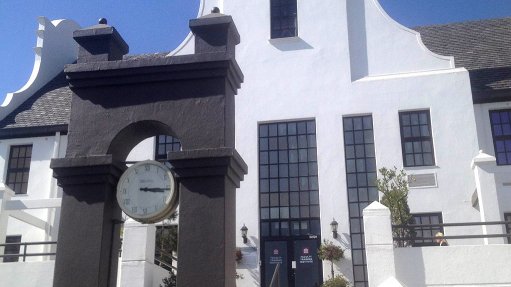
Photo by: Megan van Wyngaardt
JSE-listed Growthpoint Properties’ Kirstenhof Office Park, in Johannesburg, has become the hundredth building in South Africa to achieve a Green Star SA certification from the Green Building Council of South Africa (GBCSA), securing a 5-Star Green Star: Existing Building Performance Pilot (EBP) rating.
The 3 830 m2 multitenanted office park comprised four office blocks. Its green features included energy efficient lighting; flow restrictors on all taps; a waste and materials management plan and a stormwater management plan to limit disruption of natural hydrology, and reduce pollution and site deterioration.
The site also featured smart water and electricity meters, as well as energy efficient air-conditioning.
“We are delighted to receive the certification. Growthpoint is proud to be part of the phenomenal growth story of green building in South Africa and commends GBCSA for its significant role in creating a greener, more sustainable built environment for our country,” Growthpoint office division director Rudolf Pienaar said in a statement.
Growthpoint now owned or co-owned the largest portfolio of Green Star SA certified buildings in the country, with 23 buildings rated to date. Redefine Properties owned ten certified buildings and Melrose Arch Investment Holdings six certified buildings.
MILESTONE UNLOCKED
“Achieving 100 certifications indicates the commercial property sector’s commitment to sustainability and resources efficiency in response to growing cities and related challenges to energy infrastructure,” GBCSA CEO Brian Wilkinson said.
Speaking to journalists at Kirstenhof, he noted that the move towards green building was significant, as the built environment was responsible for around 40% of the world’s end-use energy consumption through ongoing operation, and was one of the main drivers of climate change. Buildings also accounted for about 12% of fresh water use.
The pace of green building certifications has been rising rapidly in South Africa, since the first certification was awarded by the GBCSA in 2009. In April 2014, the GBCSA made its fiftieth rating and, this year, it certified 25 buildings in the first three months alone.
In total, the organisation has certified over 1.8-million square metres of green space – the equivalent of 263 rugby fields. Gauteng boasted 1.23-million square metres in gross floor area (GFA) through 55 buildings, followed by Cape Town’s 488 000 m2 GFA.
KwaZulu-Natal had 11 certified buildings, totalling 75 508 m2 GFA, the Eastern Cape 10 032 m2 GFA and Limpopo 2 066 m2 GFA.
The 100 Green Star SA certified projects also achieved yearly combined savings of 131-million kilowatt-hours of electricity – the equivalent of powering 9 130 households for a year, as well as saving 171-million litres of water, which equated to the daily water requirements of nearly 86-million people.
Wilkinson noted that this took “massive” pressure off South Africa’s struggling power grid. “The average green building saves about 34% of energy. If the entire industry was doing this, the energy problem goes away,” he noted.
He added that it was an “incredibly effective way to mitigate against climate change. The built environment offers a unique opportunity to do something fairly quickly”.
The 100 buildings have also saved a total of 176-million kilograms of carbon emissions – the same as taking 44 069 cars off the road, or 5 000 full Boeing 747 flights travelling from Johannesburg to Cape Town.
These savings also translated into R88-million a year in energy cost savings and R1.4-million in water cost savings.